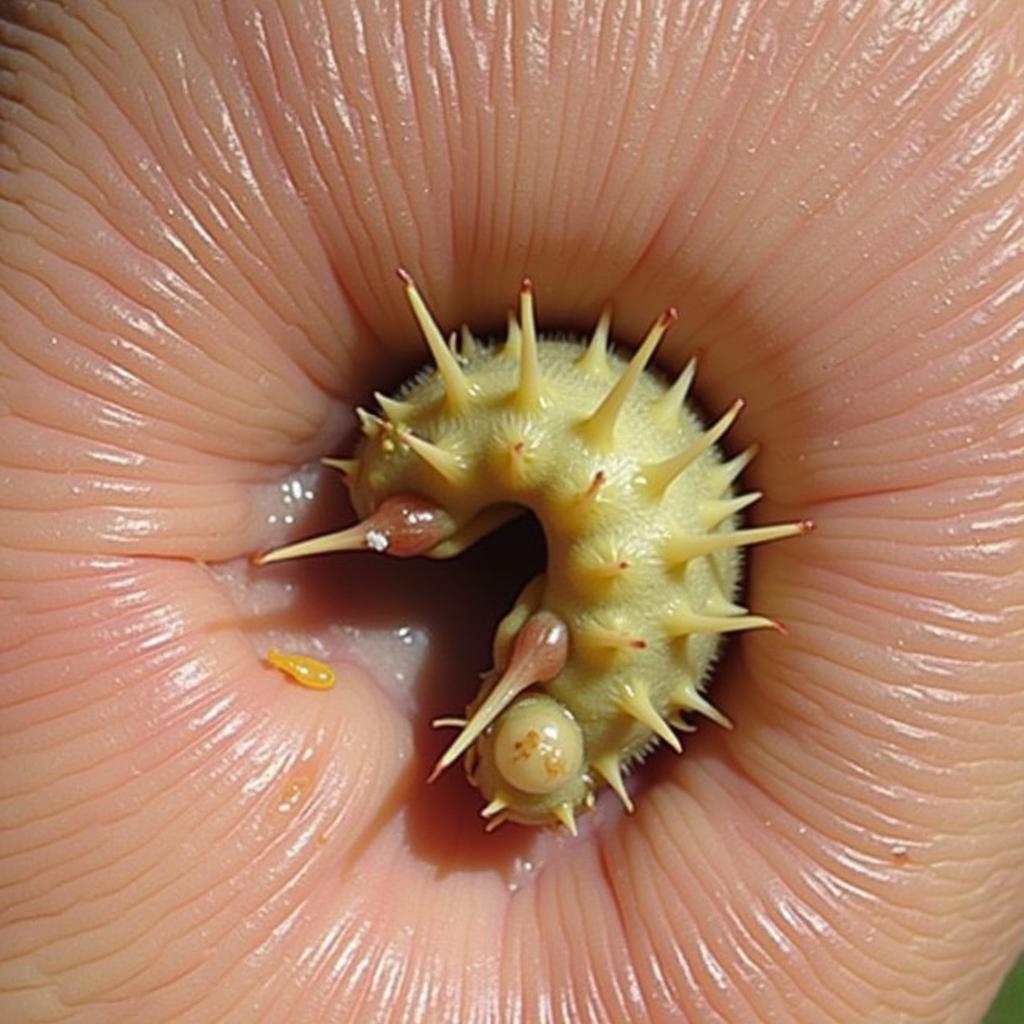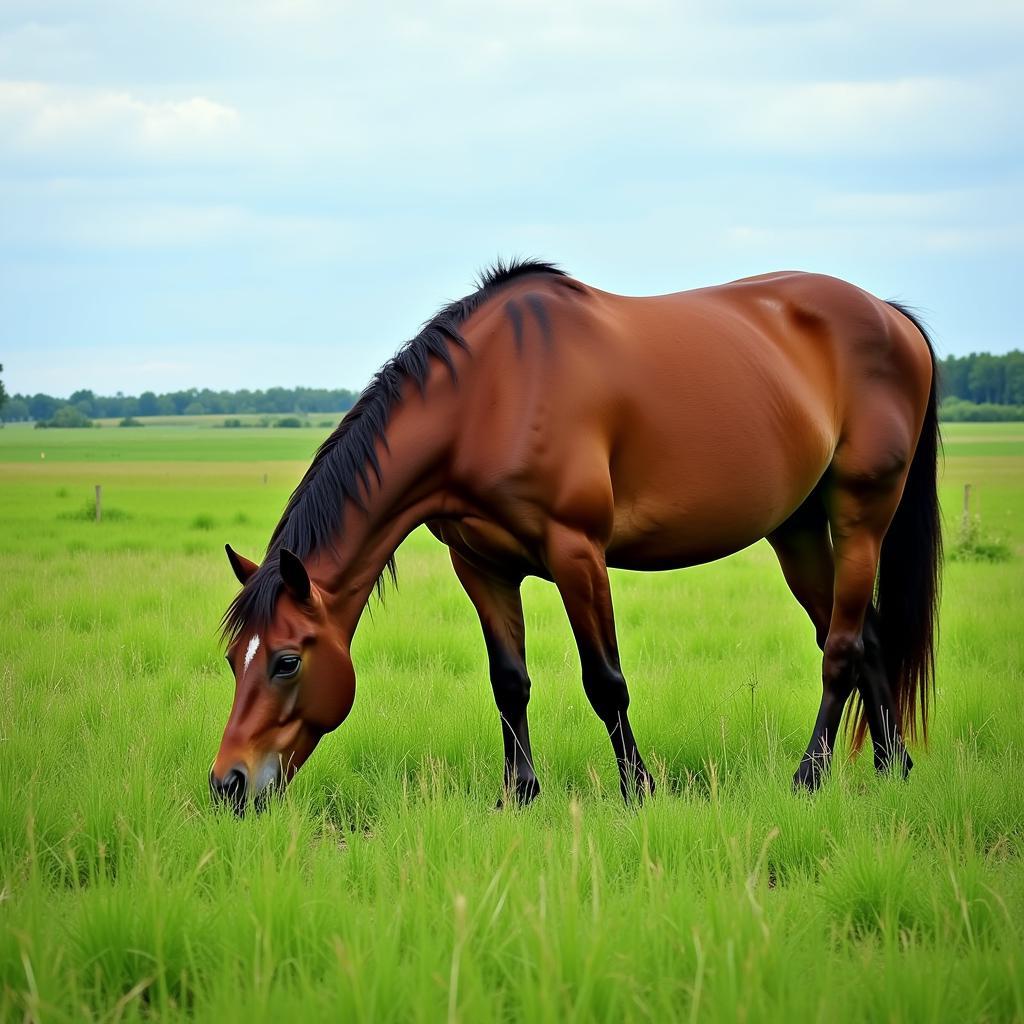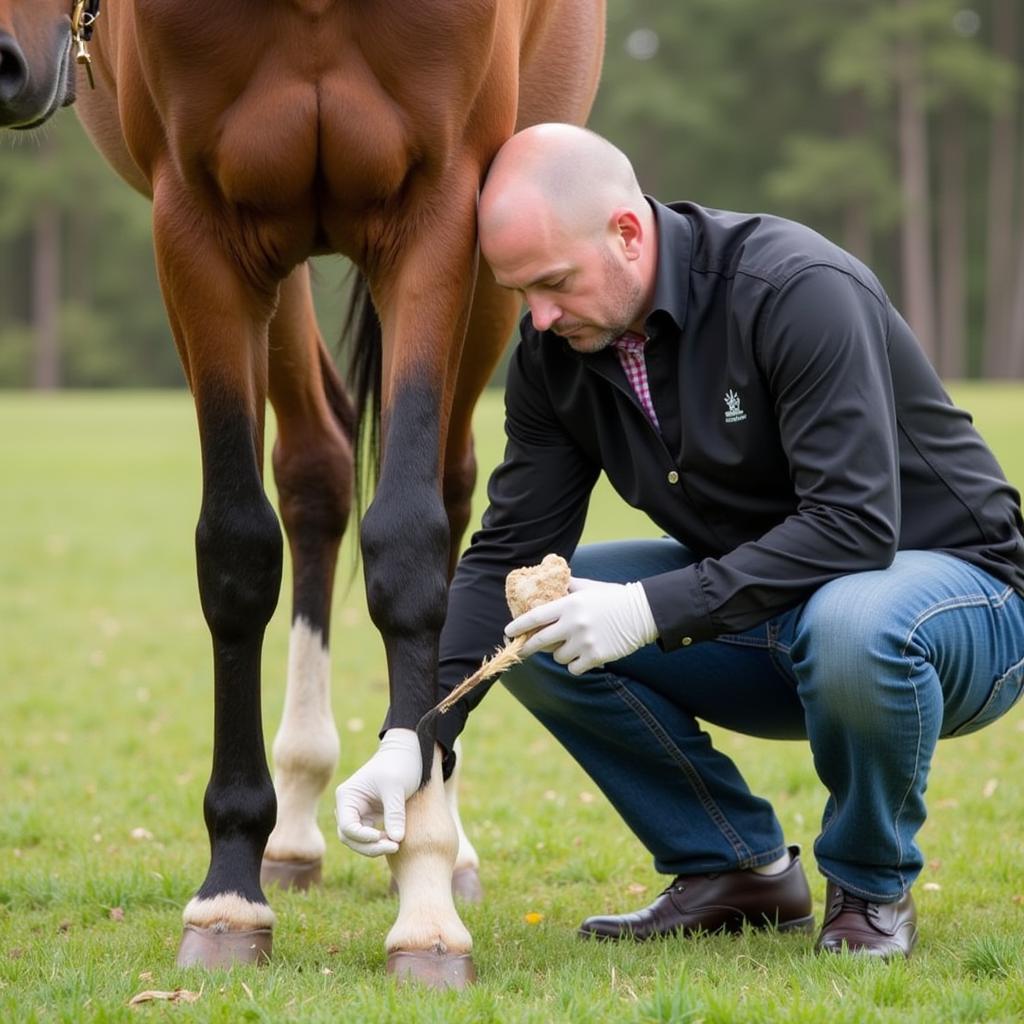Foxtail Horses and the dangers they face from these pesky plants are a serious concern for horse owners. Understanding the risks, identifying foxtail species, and implementing preventive measures are crucial for maintaining your horse’s health and well-being. This guide provides comprehensive information on foxtail plants, their impact on horses, and effective strategies for managing this common equine health threat.
Foxtails are a group of grasses characterized by their bristly seed heads that resemble a fox’s tail. These seed heads are designed to burrow into the ground, and unfortunately, they can also burrow into your horse’s skin, eyes, nose, and mouth, causing significant discomfort and potential health problems. Learn how to identify foxtail grass and horses and the issues that can arise.
Understanding the Danger of Foxtails to Horses
Foxtails pose several threats to horses due to their barbed structure and ability to migrate within the body. Ingestion, inhalation, or skin penetration can lead to various complications.
- Abscesses: Foxtails can cause painful abscesses wherever they penetrate the skin.
- Infections: Bacterial infections can develop as a result of foxtail penetration.
- Respiratory Issues: Inhaled foxtails can lead to coughing, sneezing, and even pneumonia.
- Eye Problems: Foxtails can cause eye irritation, ulcers, and even blindness.
- Digestive Upset: Ingested foxtails can cause digestive issues, including colic.
 Foxtail Penetrating Horse Skin
Foxtail Penetrating Horse Skin
Identifying Common Foxtail Species
Several foxtail species are prevalent in different regions. Recognizing these species is essential for effective management.
- Yellow Foxtail (Setaria pumila): A common annual grass found in disturbed areas.
- Green Foxtail (Setaria viridis): Similar to yellow foxtail but with a greenish tinge.
- Giant Foxtail (Setaria faberi): A larger species often found in cultivated fields.
- Bristly Foxtail (Setaria italica): Sometimes cultivated as a forage crop but can still be a problem.
Knowing which species are common in your area will help you target your control efforts more effectively. You can also explore alternatives like best grass seed for horses to cultivate safer pastures.
What does a foxtail look like?
Foxtails are easily identifiable by their characteristic seed head, which resembles a bushy fox’s tail. The color can vary from green to yellow or brown depending on the species and maturity.
How can I protect my horse from foxtails?
Managing foxtails involves a combination of strategies, including:
- Regular Pasture Maintenance: Mowing pastures regularly can prevent foxtails from going to seed.
- Weed Control: Using herbicides can help control foxtail populations.
- Grazing Management: Rotating pastures and avoiding overgrazing can reduce foxtail density.
 Horse Grazing in Foxtail-Free Pasture
Horse Grazing in Foxtail-Free Pasture
Dr. Emily Carter, DVM, specializing in equine care, emphasizes, “Regular pasture maintenance is paramount in preventing foxtail-related issues. A proactive approach is always better than treating an already afflicted horse.”
Checking Your Horse for Foxtails
Regularly inspect your horse for foxtails, especially after they have been in areas where these plants are prevalent. Pay particular attention to the following areas:
- Feet: Check between hooves and around the coronet band.
- Legs: Inspect the lower legs, especially the fetlocks and pasterns.
- Muzzle and Nose: Look for foxtails around the nostrils and mouth.
- Eyes: Carefully examine the eyes for any signs of irritation or foreign bodies.
- Ears: Check inside and around the ears.
- Coat: Thoroughly groom your horse to remove any embedded foxtails.
What should I do if I find a foxtail on my horse?
If you find a foxtail embedded in your horse’s skin, carefully remove it with tweezers. If the foxtail is deeply embedded or you are unsure how to remove it safely, consult your veterinarian. Considering alternative feed options like millet hay for horses can also help minimize exposure.
 Veterinarian Examining Horse for Foxtails
Veterinarian Examining Horse for Foxtails
John Miller, a seasoned horse trainer with over 30 years of experience, advises, “Never underestimate the potential harm of foxtails. Early detection and prompt removal are key to preventing serious complications.”
Conclusion
Foxtail horses are susceptible to the dangers posed by these seemingly innocuous plants. By understanding the risks, implementing preventive measures, and regularly checking your horse, you can effectively protect your equine companion from the discomfort and potential health problems caused by foxtails. Remember, vigilance and proactive management are crucial for maintaining your foxtail horse‘s health and well-being. Learning about alternative food sources, like can horses eat millet, can also contribute to a healthier diet and potentially reduce the risk of encountering foxtails in forage.
FAQ
- What are the most common signs of foxtail problems in horses? Common signs include lameness, swelling, discharge, head shaking, and respiratory issues.
- Can foxtails kill a horse? While rare, severe infections or complications from ingested foxtails can be fatal.
- How can I prevent foxtails from growing in my pasture? Regular mowing, weed control, and good grazing management are essential.
- What is the best way to remove a foxtail from a horse? Carefully use tweezers to remove the foxtail. Consult your veterinarian if it is deeply embedded.
- Are certain breeds of horses more susceptible to foxtail problems? Horses with longer coats or those that graze in areas with high foxtail density may be more at risk.
- Can foxtails affect other animals? Yes, foxtails can also be harmful to dogs, cats, and other livestock.
- What are some alternative forage options for horses to minimize foxtail exposure? Consider planting alternative grasses or providing supplemental hay.
For further assistance, please contact us at Phone Number: 0772127271, Email: [email protected], or visit our location at QGM2+WX2, Vị Trung, Vị Thuỷ, Hậu Giang, Việt Nam. We have a 24/7 customer service team available to help.